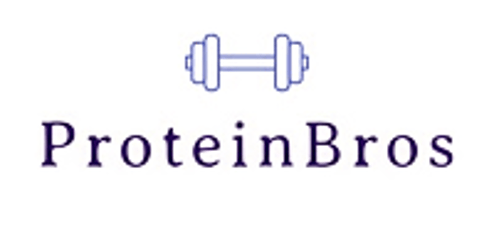Why You Need Lifting Straps and How They Can Improve Your Performance
Lifting straps are essential tools for serious weightlifters and fitness enthusiasts looking to maximize their training potential. These simple yet effective accessories provide enhanced grip strength and stability during heavy lifts, allowing users to focus on targeting specific muscle groups without being limited by hand fatigue. Learn more here1
12/23/20245 min read
Lifting straps are essential tools for serious weightlifters and fitness enthusiasts looking to maximize their training potential. These simple yet effective accessories provide enhanced grip strength and stability during heavy lifts, allowing users to focus on targeting specific muscle groups without being limited by hand fatigue.
By using lifting straps, athletes can lift heavier weights for more repetitions, leading to increased muscle growth and strength gains over time. This improved performance can be particularly beneficial for exercises like deadlifts, rows, and pull-ups, where grip strength often becomes a limiting factor.
Incorporating lifting straps into a workout routine can also help reduce the risk of injury by ensuring proper form and technique throughout each movement. As users become more comfortable with lifting straps, they may find themselves pushing past previous plateaus and achieving new personal records in their training.
The Role of Lifting Straps in Strength Training
Lifting straps play a crucial role in enhancing grip and allowing lifters to focus on specific muscle groups during training. They provide support and stability for heavy lifts while enabling targeted muscle development.
Enhancing Grip Strength
Lifting straps wrap around the wrists and bar, creating a secure connection between the lifter and the weight. This connection reduces the strain on grip muscles, allowing for heavier lifts and longer sets.
For exercises like deadlifts, rows, and pull-ups, lifting straps can significantly increase the amount of weight lifted. This increased load translates to greater muscle activation and potential strength gains.
Straps also help prevent premature grip failure during high-volume workouts. By reducing fatigue in the forearms and hands, lifters can maintain proper form throughout their training session.
Redistributing Load for Targeted Muscle Development
By alleviating grip concerns, lifting straps enable lifters to focus on engaging specific muscle groups. This targeted approach can lead to more effective muscle development and strength gains.
For back exercises, straps allow lifters to concentrate on pulling with their lats and rhomboids rather than worrying about maintaining their grip. This shift in focus can lead to improved muscle activation and better overall results.
In exercises like shrugs or farmer's walks, straps help lifters handle heavier weights for longer durations. This increased time under tension can stimulate greater muscle growth in the targeted areas.
Lifting straps also prove beneficial for individuals with weaker grip strength or smaller hands. They level the playing field, allowing these lifters to train at intensities that match their overall strength levels.
How Lifting Straps Improve Your Performance
Lifting straps provide key benefits that can significantly enhance your weightlifting performance. They allow you to lift heavier weights, perform more repetitions, and maintain proper form during exercises.
Preventing Grip Failure
Lifting straps reduce the strain on your grip, allowing you to focus on the target muscles. This is especially helpful for exercises like deadlifts, rows, and pull-ups where grip strength can be a limiting factor.
By securing your hands to the bar, straps enable you to lift heavier weights without worrying about the bar slipping. This increased load translates to greater muscle activation and strength gains over time.
For athletes with smaller hands or reduced grip strength, straps level the playing field. They can now challenge their larger muscle groups without being held back by grip limitations.
Increasing Training Volume
Lifting straps enable lifters to perform more repetitions and sets. With reduced grip fatigue, athletes can push their target muscles further before exhaustion sets in.
This increased volume is crucial for muscle hypertrophy and strength development. More time under tension leads to greater muscle fiber recruitment and adaptation.
Straps also allow for extended time in the eccentric (lowering) phase of lifts. This controlled descent maximizes muscle damage and subsequent repair, promoting faster growth.
Improving Lifting Technique
By reducing grip concerns, lifting straps help maintain proper form throughout exercises. Athletes can focus on engaging the correct muscle groups and executing movements with precision.
Straps promote a more direct line of pull in exercises like lat pulldowns and rows. This improved alignment ensures optimal muscle activation and reduces the risk of injury.
For Olympic lifts, straps can assist in perfecting the pull technique. They allow lifters to concentrate on explosive hip drive and proper bar path without worrying about grip strength.
Correct Usage of Lifting Straps
Proper technique and application are crucial for maximizing the benefits of lifting straps. Choosing the right type, securing them correctly, and using them at appropriate times can significantly enhance your lifting performance.
Types of Lifting Straps
Lasso straps feature a loop at one end and a long tail, offering versatility for various exercises. They're ideal for deadlifts and rows.
Figure-8 straps form a continuous loop, providing a secure grip for heavy lifts. These are excellent for maximum-effort pulls.
Closed-loop straps have a fixed loop size, offering quick attachment and detachment. They're suitable for Olympic lifts and CrossFit workouts.
Padded straps include extra cushioning for wrist comfort during heavy lifts. These are beneficial for those with sensitive wrists or high-volume training.
Securing the Straps Properly
Start by placing the strap around your wrist, ensuring it's snug but not too tight. Leave enough slack for wrapping around the bar.
For lasso straps, thread the tail through the loop and adjust for comfort. Wrap the remaining length around the barbell, creating a tight spiral.
With figure-8 straps, place one loop around your wrist and the other around the bar. Twist your hand to tighten the connection.
For closed-loop straps, slip your hand through the loop and wrap the excess material around the bar. Grip tightly to secure.
When to Use Lifting Straps
Use straps for exercises where grip is a limiting factor, such as heavy deadlifts, rows, and shrugs. They're particularly useful when targeting back muscles.
Incorporate straps during the final sets of an exercise when grip fatigue sets in. This allows you to complete the intended rep range without sacrificing form.
For Olympic lifts, use straps judiciously. They can be helpful during clean pulls or snatch pulls, but avoid them in full clean and jerk movements.
Reserve straps for training sessions, not competitions. In powerlifting and Olympic weightlifting events, straps are typically not allowed.
Maintaining Safety and Preventing Injuries
Proper use of lifting straps involves careful attention to technique and awareness of potential risks. Safety practices and injury prevention are crucial for maximizing the benefits of these training aids.
Common Mistakes to Avoid
Overreliance on lifting straps can lead to weakened grip strength over time. To prevent this, use straps selectively for heavy lifts or high-volume sets. Avoid using them for every exercise or lighter weights.
Incorrect strap placement may cause discomfort or reduced effectiveness. Ensure the strap is wrapped securely around the wrist and bar, with even tension distribution. Loose or twisted straps can compromise safety and lift stability.
Neglecting proper form is a serious mistake. Straps should enhance technique, not replace it. Maintain correct posture, engage core muscles, and follow appropriate movement patterns for each exercise.
Balancing Grip Training with Strap Use
Incorporate dedicated grip training exercises into your routine. This helps counteract potential grip weakness from strap use. Include farmer's walks, plate pinches, and hanging exercises to strengthen forearms and fingers.
Alternate between strap and non-strap sets during workouts. This approach maintains grip strength while allowing for heavier lifts when needed. For example, perform initial sets without straps, then use them for final heavy sets.
Set specific goals for both strapped and unstrapped lifts. This strategy ensures balanced progress in overall strength and grip capabilities. Track performance in both categories to identify areas needing improvement.
Gradually reduce strap dependency as grip strength improves. Start by using straps only for your heaviest sets, then progressively increase the weight threshold for strap use.

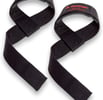
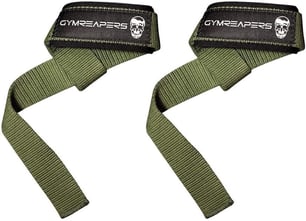

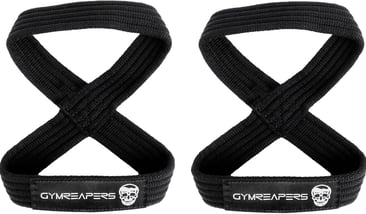

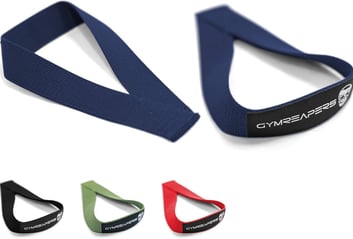

Additional info
Social media coming soon!
Contact us
Newsletter coming soon!
© 2024. All rights reserved.
